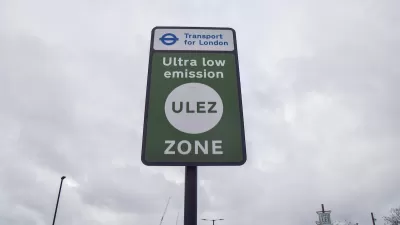Traffic on a Louisville freeway fell by half after a toll was implemented. Could this be the best way to reduce traffic congestion?

Writing in City Observatory, Joe Cortright suggests that congestion pricing is one of the most effective ways to reduce traffic. He points to an example from Louisville, where traffic on Interstate 65 fell by half after Indiana and Ohio instituted a $1 to $2 toll on a bridge across the Ohio River.
The two states spent a billion dollars doubling the size of I-65, only to have half as many people use the bridge. That money was wasted. Nothing more clearly illustrates the utter folly of highway expansions. As we’ve pointed out, highway engineers size roadways based on the assumption that the users will pay nothing for each trip. … But ask people to pay, and you’ll get fewer takers.
According to Cortright, this suggests that most drivers don't want to pay to use roads, and will avoid toll roads by taking alternate routes or alternate modes of transport, or not making some trips at all. Even a small toll, such as Louisville's $1 to $2 fee, can have a noticeable impact on congestion and road usage. Meanwhile, highway expansion has been repeatedly shown to induce demand and encourage more driving. While state DOTs have been slow to implement congestion pricing programs, road pricing, Cortright argues, is a "surefire fix for traffic congestion."
FULL STORY: How to solve traffic congestion: A miracle in Louisville?

Alabama: Trump Terminates Settlements for Black Communities Harmed By Raw Sewage
Trump deemed the landmark civil rights agreement “illegal DEI and environmental justice policy.”

Study: Maui’s Plan to Convert Vacation Rentals to Long-Term Housing Could Cause Nearly $1 Billion Economic Loss
The plan would reduce visitor accommodation by 25% resulting in 1,900 jobs lost.

Planetizen Federal Action Tracker
A weekly monitor of how Trump’s orders and actions are impacting planners and planning in America.

Wind Energy on the Rise Despite Federal Policy Reversal
The Trump administration is revoking federal support for renewable energy, but demand for new projects continues unabated.

Passengers Flock to Caltrain After Electrification
The new electric trains are running faster and more reliably, leading to strong ridership growth on the Bay Area rail system.

Texas Churches Rally Behind ‘Yes in God’s Back Yard’ Legislation
Religious leaders want the state to reduce zoning regulations to streamline leasing church-owned land to housing developers.
Urban Design for Planners 1: Software Tools
This six-course series explores essential urban design concepts using open source software and equips planners with the tools they need to participate fully in the urban design process.
Planning for Universal Design
Learn the tools for implementing Universal Design in planning regulations.
Caltrans
Smith Gee Studio
Institute for Housing and Urban Development Studies (IHS)
City of Grandview
Harvard GSD Executive Education
Toledo-Lucas County Plan Commissions
Salt Lake City
NYU Wagner Graduate School of Public Service





























